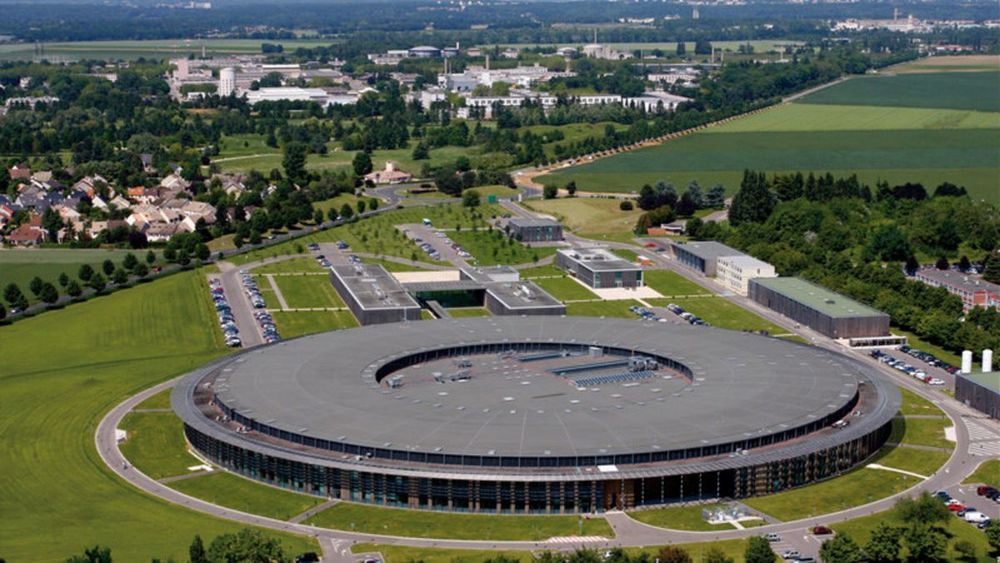After repurposing facial recognition and deepfake tech to study galaxies and the Higgs boson, physicists think they can help shape the responsible use of AI.


Featured image: @Carroll__Burns/Twitter
At the Q2 2020 Earnings Call, Tesla CEO Elon Musk announced the location of the new factory. The Gigafactory for the production of the Semi, Cybertruck, Model Y, and Model 3 will be built in Austin, Texas and will be Tesla’s largest factory yet.
For now, the plan describes a 280-acre building, although the company has purchased a 2,100-acre site. Of course, given the company’s plans for the production of the Semi, Cybertruck, Model Y, and Model 3—as well as the presence of a recreation area on the territory of Giga Texas—it is not surprising that Tesla needs such a massive piece of land.

Andy takes a closer look at one of his favourite demos from the 2012 Christmas Lectures, bringing together a levitating superconductor and a bewildering Möbius strip made from over 2,000 magnets.
We’d love it if you helped us translate this video: https://www.youtube.com/timedtext_video?v=zPqEEZa2Gis
As his super-conducting boat whizzes along the track, Andy demonstrates the remarkable properties of the superconducting material (Yttrium barium copper oxide) which allows it to seemingly float both above and below the track.
Subscribe for regular science videos: http://bit.ly/RiSubscRibe
The Ri is on Twitter: http://twitter.com/ri_science
and Facebook: http://www.facebook.com/royalinstitution
and Tumblr: http://ri-science.tumblr.com/
Our editorial policy: http://www.rigb.org/home/editorial-policy
Subscribe for the latest science videos: http://bit.ly/RiNewsletter
The following is adapted from Lewis’ The Rise: Creativity, the Gift of Failure, and the Search for Mastery, published by Simon & Schuster.
“It says, ‘No entrance,’ but you just enter,” physicist Andre Geim told me about the graphite mines in the mountains where he often hikes. His comment embodied the insouciance behind his Nobel Prize–winning physics experiment and his habit of experimenting deliberately outside of his area of expertise.
Geim, a Russian-born Dutch and British citizen and a professor at the University of Manchester, and his colleague Konstantin Novoselov won the 2010 Nobel Prize in physics for their experiments involving the single-atom-thick material called graphene—the thinnest, strongest, most conductive material in existence. It is predicted to replace silicon and transform the electronics industry as we know it.

Using superconductors, scientists can levitate small creatures such as fruit flies for long periods of time.
Scientists who want to study the effects of weightlessness have always had precious few options. There’s the “vomit comet,” NASA’s Weightless Wonder plane that creates a few seconds of weightlessness during parabolic flights. Or they could convince the space agency to actually launch their experiments into the great beyond.
But there might be an easier and cheaper way: levitation.
In a recent study, physicist Richard Hill and colleagues used superconductive magnets to levitate fruit flies for an extended period of time, allowing them to study the long-term effects of weightlessness on the insects’ biology. A fruit fly is a far cry from a human, but studying insects in weightlessness here on Earth is much cheaper than doing so inside a satellite 220 miles away in space, and even fruit flies could tell scientists something about how humans and their DNA will react to long-duration spaceflight.

OneWeb is set to resume launches with Arianespace in December to build out its Low-Earth Orbit (LEO) satellite internet constellation. The satellite operator announced Monday that Arianespace will provide 16 more launches, each placing another 34 to 36 satellites into OneWeb’s constellation.
This update comes as OneWeb is in the midst of a restructuring deal with the U.K. government, Bharti Global Limited, and Hughes Network Systems after filing for Chapter 11 in March. The U.K. government and Bharti Global Limited announced in July they formed a consortium to acquire OneWeb, each providing $500 million. Hughes joined the consortium in July with a $50 million investment. The deal is still subject to regulatory approval and is expected to close by the Fourth Quarter of 2020.
OneWeb has 74 satellites in orbit and its return-to-flight launch in December will increase the fleet to 110 satellites. The company plans to complete the deployment of its constellation by the end of 2022, and start commercial services by the end of 2021. The initial service regions above 50 degrees North latitude will include the United Kingdom, Alaska, Northern Europe, Greenland, Iceland, the Arctic seas and Canada.

Excerpts from two videos dealing with the topic:
Is life a video game? | Elon Musk | Code Conference 2016
Elon Musk’s Question to AI: What’s Outside The Simulation?
Science Time, September 2020
El video tiene subtítulos en Español.
The Airbus A³ Vahana is a full-scale prototype self-piloting tilt-wing vehicle 😍.